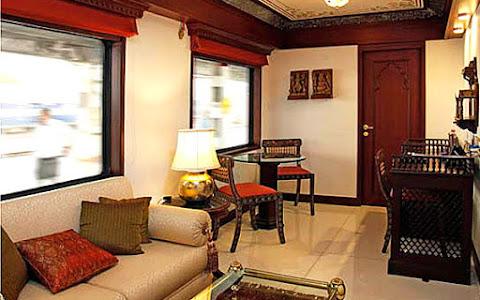
IRCTC
- Full
form: Indian Railway Catering & Tourism Corporation
- Incorporated
on 27th September, 1999 (incidentally, World Tourism day falls on
27th September)
- Headquarters:
New Delhi (Registered & Corporate Office)
- CMD
- Chairman & Managing Director: Shri Sanjay Kumar Jain, IRTS 1990
(From February 2024 onwards)
- Zonal
Offices - 5 ( New Delhi, Mumbai, Kolkata, Chennai & Secunderabad)
- Regional
Offices - 10 ( Lucknow, Chandigarh, Jaipur, Bhopal, Ahmadabad, Guwahati,
Bhubaneshwar, Patna, Ernakulam & Bangalore)
- Internet
Ticketing Office - New Delhi
- Tourism
Office - New Delhi
- Mini
Ratna (Category 1) CPSE (Central Public Sector Enterprise)
- Extended
arm of Indian Railways in the areas of Internet ticketing, catering,
tourism & Rail Neer packaged Drinking Water
Vision:
1. Global Reservation System
2. Professionalization of Catering & Hospitality services
3. Development of Budget Hotels
4. Special Tourism packages.
IRCTC is the fourth Railway company to be
listed on the bourses after RITES, Rail Vikas Nigam Ltd and IRCON International
Ltd.
The initial public
offering (IPO) of ₹645 crore concluded in October, 2019.
Subscribed 112 times
at a price band of ₹315-320 per share (Face Value is Rs. 10), making it the
most successful share sale since January 2018.
IRCTC stock price as
on 22.09.2024 is Rs. 890 /-
139 - IRHES stands for
Integrated
Railway Helpline & Enquiry System
The government now owns 62.4% stake in the railway tourism
company (as on 30.06.2024
Core activities
|
Internet Ticketing
|
Catering & Hospitality
|
|
Travel & Tourism
|
Packaged Drinking Water(Rail Neer)
|
Internet Ticketing:
Started in the year 2002 (first day - 27 tickets) with
i-Ticket. Later, e-Ticket was introduced in the year 2005
2023-24 year data - No of Tickets Sold (in
brackets 2022-23)
|
In One Year
|
In One day
|
In One Hour
|
In One Minute
|
In One Second
|
|
45.30 Crores
(43.13 Crores)
|
12.41 Lakhs
(11.82 Lakhs)
|
51700
(49200)
|
860
(820)
|
15
(14)
|
- IRCTC Mobile App - Approximately 10 Crores Users
- Mobile
app downloads (Android & iOS)- 12.20 Crores (as on 31.03.2024)
- IRCTC's share in Total Train Reserved Tickets - 83 %
as on 31.03.2024. Hope the share will climb up to 95 % in the coming
years. (54% as on 31.03.2015)
- Record break - Highest booking - 28434 tickets in one minute ( 11.02 AM of 12.11.2022) - Tatkal time - (474 tickets per second)
- New
initiatives in Ticketing sector.
1. Waitlist confirmation prediction facility
2. Facility of Book now pay later (after 15 days)
3. Train Vacant Seat chart module - to view
complete information of vacant, booked and partially booked berths in a train
reservation chart
Catering & Hospitality
- One of the largest hospitality & catering companies
of the country.
- Covering
Passenger trains, Railway Stations etc.
- On
board catering services - 480 trains (incl: Rajdhani, Shatabdi, Duronto,
Gatiman, Vande Bharat & Tejas)
- TSV
- Train Side Vending services in Trains which do not have pantry car
provision.
- Catering
Policy 2017 - Divides Catering business into " Meal Production"
and " Meal Distribution".
- Executive
Lounges at important stations with facilities of reclining sofa, buffet
service, wi-fi, shower like in Airports with nominal charges.
- E-
Catering facility - Order online.
- Live
streaming of 43 Base Kitchens. click for New Delhi Base kitchen
Travel & Tourism
- Rail tour packages - Runs 70 Rail tours
- Special
Tourist trains - Bharat Darshan, Aastha circuit
- Buddhist
circuit train
- Majestic tourist train - to
cover important destinations in Rajasthan
· Maharajas' Express - The best luxury train in the
World (for 2 people - 4 days
journey covered Agra & Jaipur costs Rs. 6 Lakhs approx) click for more
information

Public can book
Trains, coaches and saloons exclusively for any event/function through online.
- Retiring Rooms - Major Railway Stations
- Budget
Hotels - Rail Yatri Niwas at New Delhi and Howrah. BNR(Bengal Nagpur
Railway - old name of South East Railway) Hotels at Puri &
Ranchi.
- Air ticketing through IRCTC
website.
Rail Neer Plants
· Branded packaging water "Rail Neer"
for Rail commuters
· 19 operational Rail Neer plants.
********